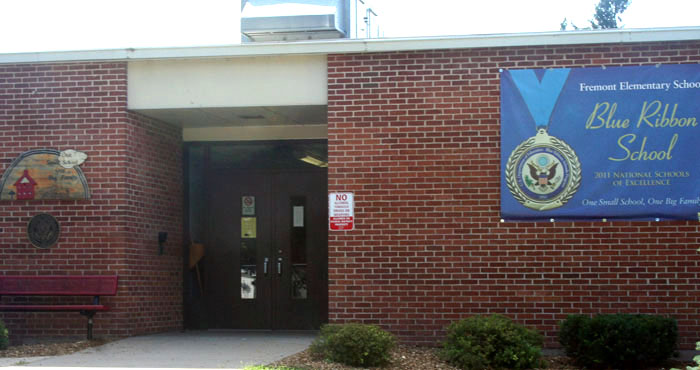
Growing pains for Fremont Elementary
By James Card
Two remarkable things are happening at Fremont Elementary School: the new STEM Academy within the school is growing – up to 23 students now – and class sizes of elementary school students are increasing.
The school building has remained the same and now there are more students than ever.
At the Nov. 28 school board meeting, District Administrator Phillip Tubbs pointed out the irony of the situation. For years there was speculation that Fremont Elementary School might be closed because of low enrollment.
Now it’s the opposite and projected enrollments show more incoming students in the future.
“The good news is that we are expanding Fremont Elementary. It was below 70 students my first year here and now with the charter school we are up in the 120s,” he said.
“You’ve got to remember, when I first got here our conversations with a lot of people was to close Fremont,” said Tubbs.
‘I think that’s been 20-plus years of conversations,” said board president Sandra Smith.
“Our goal was to try to expand it and grow it and five years later, here’s where we’re at,” said Tubbs.
Principal Jodi Alix also noted that recognition should be given to all of the teachers that continued to work at the school over the years despite rumors of the school being shuttered.
Chamomile Nusz, the school’s charter school consultant, explained to the board the current status of the STEM Academy, it’s funding and the ins and outs of applying for a future expansion grant. The school is growing every year.
When the school opened, it was for 5th and 6th graders. This year they added seventh graders and they plan to add eighth grade next year. In the school’s original grant, it was written for fifth through eighth grade with the option to expand one grade per year. “Fourth would be a direction to go because we have a lot of requests for education going down to that fourth-grade level for project-based learning and STEM learning so that’s a discussion that could happen when these grant funds run out,” said Nusz.
Paul Krause, president of the charter school board, credited teachers Jennifer Steidtman and Brianna Lubbers for the success of the STEM Academy. “The staff definitely is making things happen,” he said.
One option to handle the growing student body was moving the fifth graders at Fremont Elementary School to the Weyauwega Middle School. This led to a 30-minute long conversation about making such a move. They discussed population growth in Fremont, the maturity of fifth graders making a transition to middle school, comparisons with other school districts on 5th graders, parental concerns and sports and afterschool activities for the fifth graders.
Another option would be to relocate the STEM Academy entirely or build an addition on the backside of Fremont Elementary School that could be funded through a capital campaign.
The board did not make any decisions on these growing pains and the topic would be discussed at future meetings. This was an exploratory conversation. If a decision was made to move the fifth graders to Weyauwega Middle School, they would host an informational meeting with parents and have a question-and-answer session.
STEM High School
This led to the possibility of the STEM Academy going to the high school level. Tubbs described the charter school as “a school within a school” and as the STEM students advance through the middle grades, they have no option to continue their project-based learning and science-tech-engineering-math studies at the high school level.
Nusz gave a presentation on how a STEM charter school could be created and provided a timeline over the next few years on how it would play out with grant writing, getting funding and to enrollment leading up to the 2025-26 school year.
“We have this amazing space of innovation we’ve created at the Fremont STEM Academy. As Phil [Tubbs] said, where are the kids going to go after that? We are attracting students to this district because amazing education is happening in this district. Just like fears of students leaving and going somewhere else, that’s not what’s happening right now and we want to continue that trend of having innovative schooling options that aren’t happening in our surrounding communities which means we are going to attract students in,” said Nusz.
The high school would be a separate charter, making two charter schools within the district. The school could have separate boards of governance or the existing board for the Fremont STEM Academy could also oversee the high school as their knowledge from launching the STEM Academy is valuable experience. The first year the high school would be opened, it would be for grades 9, 10 and 11. Twelfth grade would be added in the second year.
Nusz recapped how enrollment works at charter schools and explained their lottery system. To make a STEM high school a reality, the next step is for the school board to make a vote indicating interest in starting a high school for a grant to be submitted in February. That means a decision would have to be made soon, along with deciding how to make more room at Fremont Elementary.
